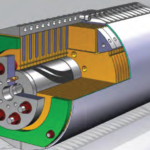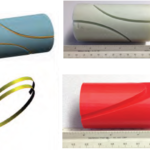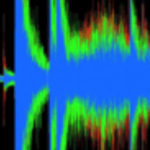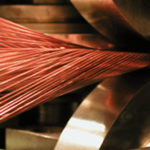The Program is composed of four primary elements.
High-Field Dipoles |
This element focuses on feasibility demonstration of an accelerator-lattice-quality dipole with a bore field of 16 T with two complementary approaches: a reference design based on the well-understood cosine-theta geometry, and aggressively investigating innovative designs, notably canted-cosine-theta (CCT), that may prove to have better performance at a lower cost per tesla-meter. |
High-Temperature Materials |
Here we evaluate the feasibility of high field accelerator magnets based on high-temperature superconductor (HTS) materials. The overarching goal is to design and fabricate HTS accelerator magnets that generate record fields while maintaining an ongoing vigorous science program, and partnering with industries and universities. More… |
|||
Foundational Technologies |
Breakthroughs in magnet performance, particularly in training and operating margin requirements, will require further understanding and control of the underlying physics mechanisms. This magnet science component of the program leverages developments in modeling, materials, and diagnostics that are critical to advancing magnet technology.More… |
Conductor R&D |
Conductor development is a critical component of the program, and two-way collaboration with industry is key to it. Therefore we focus on procurement of “workhorse” conductors to support magnet R&D, and also on further industrial development of more advanced conductors relevant to the USMDP. More… |
|||
Within each of these areas of endeavor, designated leads representing areas of expertise at the partner labs
- Develop prioritized tasks, budgets, and milestones/schedules
- Identify expertise and infrastructure that can be applied to the tasks
- Communicate and defend the prioritized tasks to the broader MDP
Future milestones will depend on progress and possible down-select decisions based on review of program performance.




